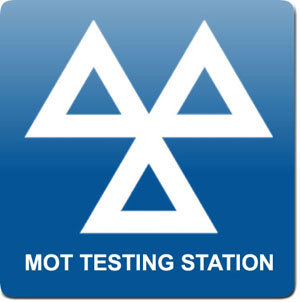Is the MOT changing to Every Two Years a Good Idea?

Millions of vehicles in the United Kingdom undergo an MOT annually, nearly a third of those used vehicles fail their MOT test on the first attempt because of faults with indicators and other electrical components according to data released by the Driver and Vehicle Standards Agency (DVSA), mainly small issues easily rectified by any local MOT garage or good motor mechanic.
Therefore, many motorists and some working in the motor trade industry have raised doubts about the Government’s plan to amend the compulsory MOT from once every year to every two years.
In a recent survey published by the RAC, more than 55% of the drivers that were questioned said they felt changing the MOT timeframe was a bad idea, over a fifth said it was a good idea and 23% were unsure.
Our annual MOT vehicle servicing goes back to 1960. It has been extended over the decades to include newer modern checks like vehicle emissions which was added to the list in 2018 when the service underwent big changes, moving away from a simple pass or fail with advisories to a new five-category system.
Failures were made up of either major and dangerous fails, and three pass categories were introduced: pass, pass with minor defects; and pass with advisories.
Chief executive of the motor trade industries ‘Society of Motor Manufacturers and Traders’ (SMMT), Mr Hawes said: “The industry shares the widespread concern over rising prices and the squeeze on household incomes. Safety, however, must always come first, and while today’s vehicles are more reliable than ever, regular MOTs ensure that safety-critical components such as brakes and tyres, which wear out as a result of normal operation, are properly inspected and maintained.”
“Stretching MOT intervals will undermine the safety net at a time when vehicle miles driven are increasing. To ensure the safety of our roads, drivers, passengers, pedestrians and other road users, inspections and maintenance must be carried out annually following their first presentation in year three.”
All but 2% of motorists surveyed believed it would result in a rise in unsafe vehicles while 20% thought an increase in the number of road collisions and private and motor trade insurance
claims were inevitable. The RAC warned that increasing the time between MOT tests could put more lives at risk, with more vehicles on illegal tyres through natural wear and tear.
Head of roads policy at the RAC, Nicholas Lyes said, “There is a real danger that if the Government proceeds with these proposals, we could see an increase in the number of collisions and more injuries and deaths due to more unroadworthy vehicles using our roads, and an overall reduction in road safety,”
At the time of writing this article, £54.80 is the maximum cost of an MOT, prices do vary depending on vehicle type, and all new cars must have an MOT test three years after the date of their first registration. Below, are the top 5 reasons (in order) as to why some vehicles fail their MOT test according to data supplied by the DVSA.
Lights, reflectors, and electricsSuspensionBrakesTyresImpaired visibility
According to the data 19% of non-passes are due to suspension, 16% down to braking systems and 12% fail because of worn or damaged tyres which testers rate with brakes as top the list for areas of great concern.
The Government’s proposal is meant to help ease some of the financial pressure as the cost-of-living continues to rise, but some drivers believe the changes could even cost motorists more in repairs if problems go undetected for too long, it might also prompt some garage mechanics and tyre dealers to start increasing costs to cover the potential loss of earnings from carrying out less MOT work.

RAC head of roads policy Nicholas Lyes said: “Many drivers look at the MOT test as an important tool to see if their vehicle is in a safe and roadworthy condition. It makes them feel safer when driving and carrying family and friends knowing that, at least officially, their vehicle has been passed as safe to use on the roads. It also gives drivers peace of mind from an overall road safety point of view to know that every other vehicle on the road has undergone the same checks.”
“We already know that many vehicles fail their MOT because of illegal tyre tread, so if this figure were to get significantly bigger more lives would be put at risk from vehicles losing grip on the road and not stopping quickly enough when brakes are applied.”
“There is a real danger that if the Government proceeds with these proposals that we could see an increase in the number of collisions and more injuries and deaths due to more unroadworthy vehicles using our roads, and an overall reduction in road safety. “
“We’ve written to the new Secretary of State for Transport and urged her to consign this idea to the bin and look at other ways to help cash-strapped drivers reduce their motoring costs.”






